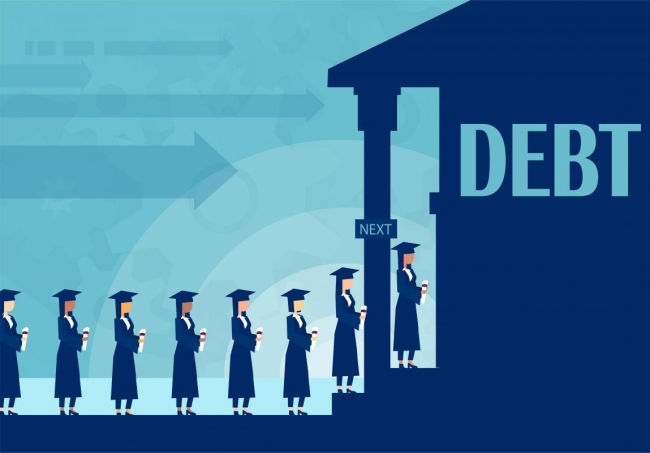You have /5 articles left.
Sign up for a free account or log in.

Istockphoto.com/Feodora Chiosea
Student loan borrowers who earned bachelor's degrees in 2018 had an average debt of $29,200, up 2 percent from their peers in the Class of 2017, the Institute for College Access & Success said in its annual student debt report Thursday.
That represents a slight slowing in the rate of borrowing, as the average debt level for borrowers rose at a steady average of 4 percent a year between 1996 and 2012 and slowed after that between 2012 and 2016 before reaching the 2 percent it rests at now.
The data in the annual study by TICAS, as the group is known, come from self-reporting from universities.
The study looks at students who earn bachelor's degrees from four-year institutions. They are not the students most likely to struggle with student loan debt (those who do not complete a degree), but the approach allows for easy comparison across time and states, said Debbie Cochrane, executive vice president of TICAS. "There are a lot of different ways to look at debt.”
The study finds that roughly two-thirds, or 65 percent, of 2018 bachelor's degree recipients had taken out student loans. While student debt continues to climb, the rate of growth of student borrowing has slowed some since 2012, when people were still recovering from the recession and student borrowing increased by about $1,100 per student.
TICAS’s report on 2018 graduates showed that states with lower rates of debt were concentrated in the West, while states with more debt were mostly in the Northeast. This is true to past trends. The state with the highest debt average is Connecticut, and the state with the highest likelihood of having debt was New Hampshire. Utah was at the bottom of the list in both of those categories.
According to Cochrane, this can be partially explained by the demographics of students in these states. At Western universities, students tend to be local and pay in-state tuition, while in the Northeast students tend to attend smaller nonprofit colleges that cost more.
Sandy Baum, a senior fellow in the Income and Benefits Policy Center at the Urban Institute, has found similar trends in the annual studies she does with the College Board.
Baum noted that borrowing per undergraduate student has gone down since the recession, and that while there is still a high amount of student debt, borrowing is leveling off.
Some contributing factors to this include the cost of public institutions having gone up more slowly, a shift made possible in part by states' increased spending on student aid and higher education appropriations. Changing enrollment patterns are also a factor, she said; for example, fewer people are enrolled in for-profit institutions.
“Students are borrowing more money than they did a generation ago, but a different demographic of student is going to college,” said Baum, emphasizing the need to make sure that students are getting a good enough education to afford the debt they are accruing.








